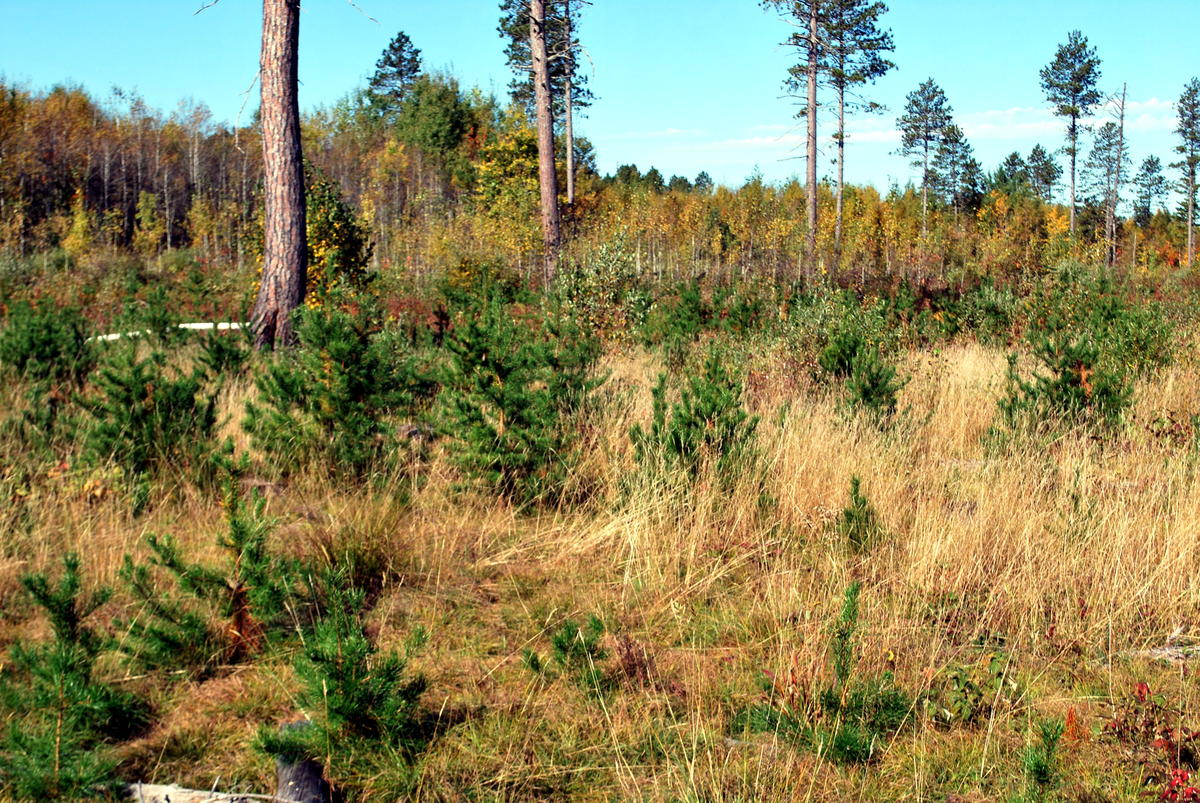Overview
This stand is characteristic of how jack pine is regenerated in the Littlefork DNR Forestry area with summer and fall harvesting for scarification. Limbs and slash are distributed throughout the entire harvest area to take advantage of seed produced on site.
Silviculture Objective(s)
The focus of managing this stand is on maintaining the pre-harvest species composition which was dominated by jack pine. On DNR Forestry lands, jack pine seeding is checked several times for appropriate average trees per acre and stocking. This stand will have standards checked at year 3, 6, and 10 after harvest in 2010. The regeneration is considered adequate if it meets the standard of 600-800 trees/acre with 75% stocking in year 3. By year 10, 500-600 trees per acre with 75% stocking is acceptable.
Pre-treatment stand description and condition
Stand establishment and management history:
Stand was shown to be clearcut in 1940 aerial photo.
Pre-treatment species composition:
Stand was 27.5 cords/acre pine, dominated by jack pine. Remaining species averaged 4 cords/acre. Jack pine averaged 9" DBH and 6 sticks. Norway pine averaged 11" DBH and 6 sticks. White spruce averaged 11" DBH and 6 sticks. Aspen averaged 13" DBH and 5 sticks. Birch, red maple and balsam fir averaged 7" DBH and 3 sticks. The stand was approximately 70 years old at time of harvest.
Pre-treatment forest health issues:
Tip blights (Diplodia spp. and Sirrococcus spp.) are common in this area, as is Armilaria root rot.
Silviculture Prescription
Harvest began August 2010 with a conventional operation. Stand was harvested throughout fall with a focus on scarification and dragging back limbs. Sale was closed in December of 2010.
Harvest regulations included:
- Reserve all white pine, oak, and two Norway pine per acre greater than 15” in DBH
- Reserve all non-hazardous snags
- Tree length skidding required
- Conduct all sale operations on dry, snow-free soil conditions
- Lop and scatter all slash evenly throughout the sale boundaries (including top piles for slashing)
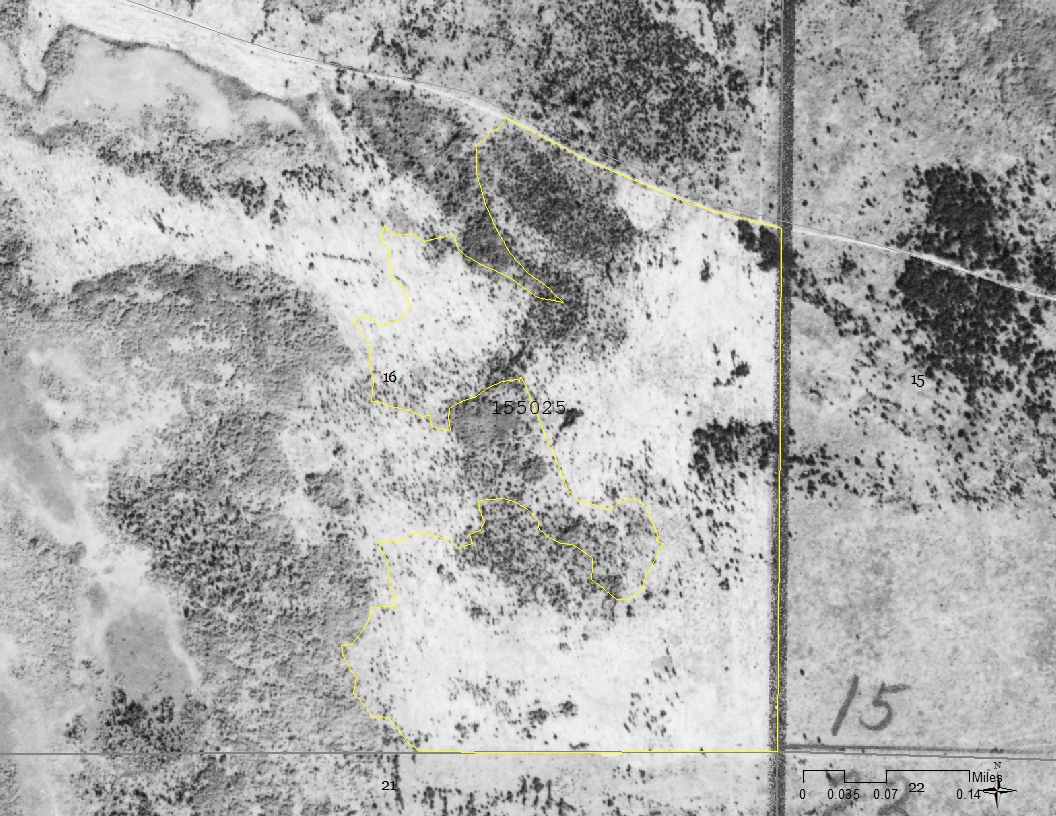
Figure 1: b/w aerial photo of Ben Linn natural jack pine reforestation area, taken in 1940.
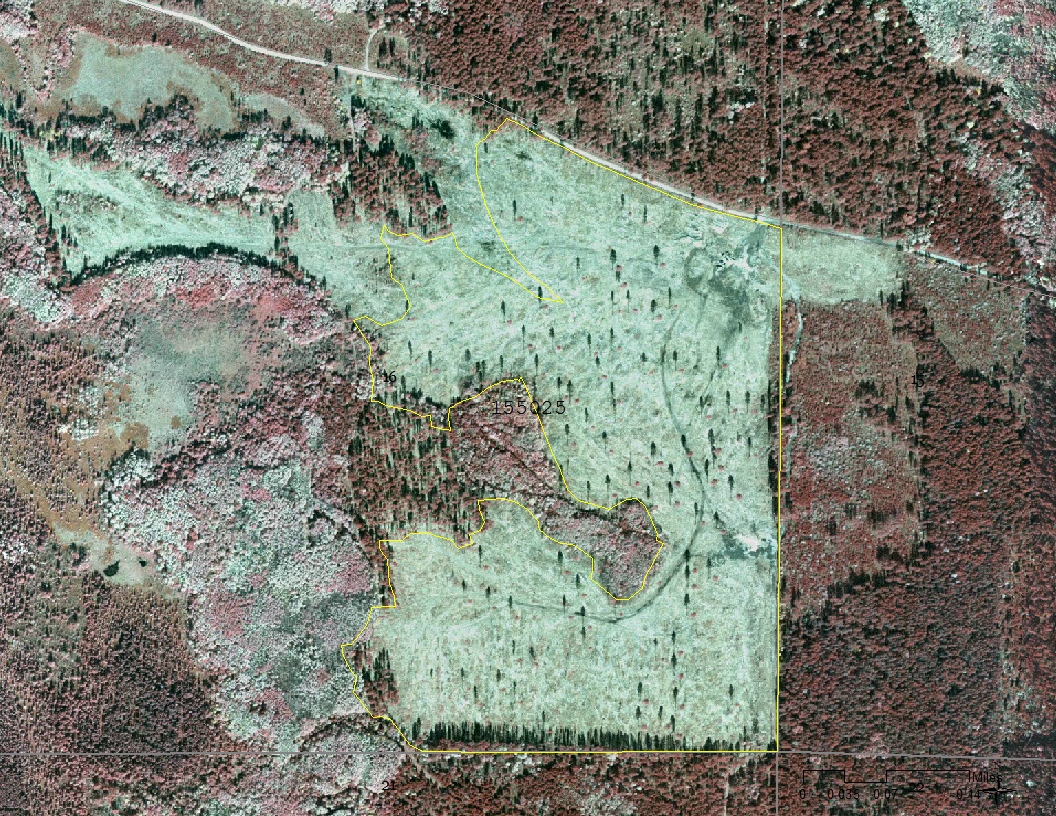
Figure 2: 2010 infrared aerial photo of Ben Linn natural jack pine harvest area showing clearcut with Norway pine, white pine, and oak reserves.
45 acres of the stand was released with brush saws in September 2015.
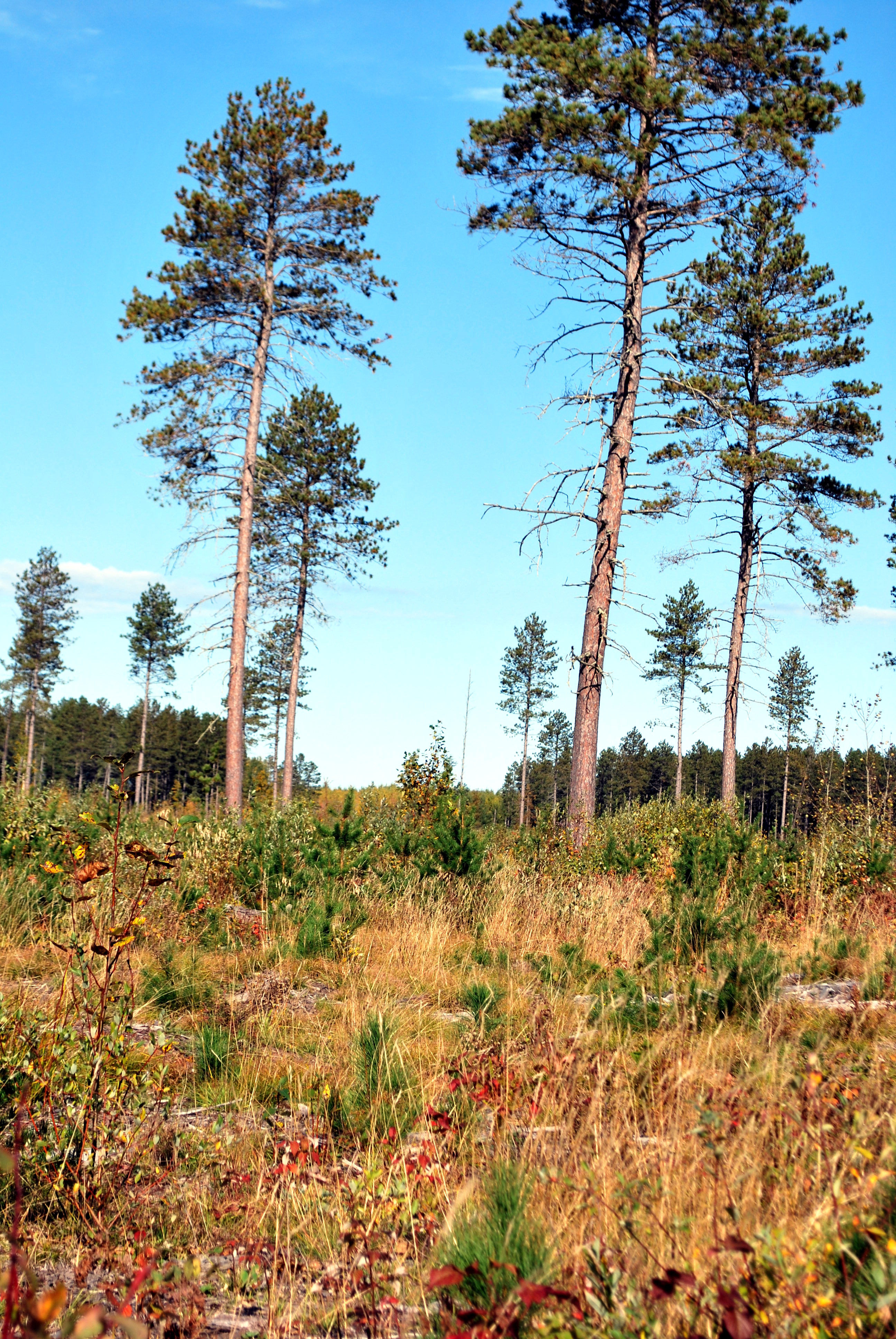
Figure 3: Natural origin jack pine seedlings under reserve Norway pine in year 5. Photo taken September 2015.
Post-treatment assessment
Regeneration check June 2013
- Jack pine 82% stocking, 2191/acre
- White pine 3% stocking, 15/acre
- Aspen 35% stocking, 941/acre
- Burr oak 6% stocking, 59/acre
- Browse noted on jack pine
Regeneration check Spring 2015
- Jack pine 84% stocking, 1580/acre
- Aspen 50% stocking, 1407/acre
- Burr oak 11% stocking, 34/acre
- White spruce 4% stocking, 4/acre
- Hazel, cherry, willow competition
- Deer browse noted to be heavy in northern part of stand
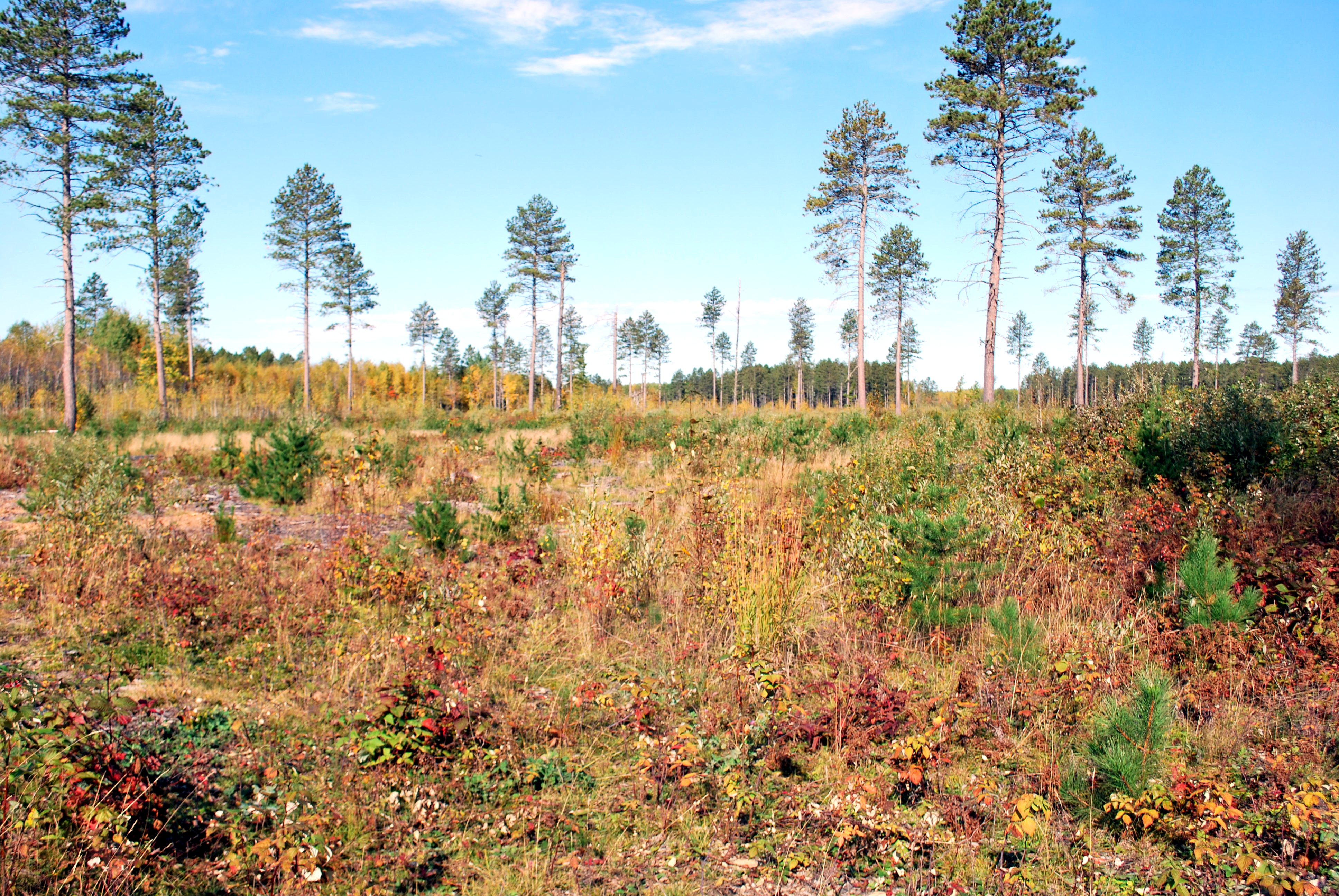
Figure 4: Another view of Ben Linn natural jack pine reforestation in September 2015.
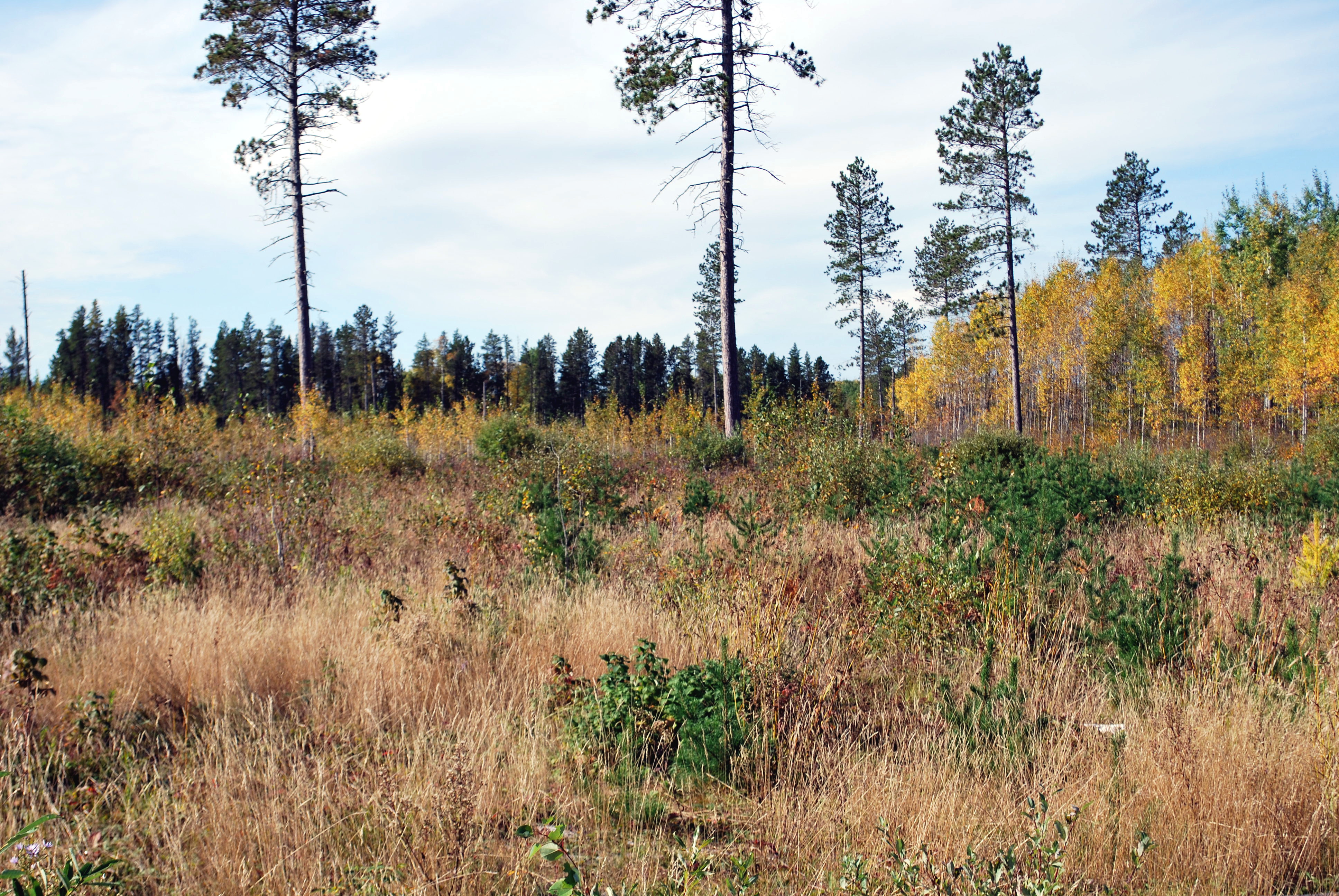
Figure 5: View of jack pine natural regeneration with 5 years of growth off Ben Linn State Forest Road. (photo taken Sept. 2015)
Plans for future treatments
No future treatments are planned.
Costs and economic considerations
Brush saw release at $140/acre in September 2015 for 45 acres. The rest of the site was free to grow at that time.
